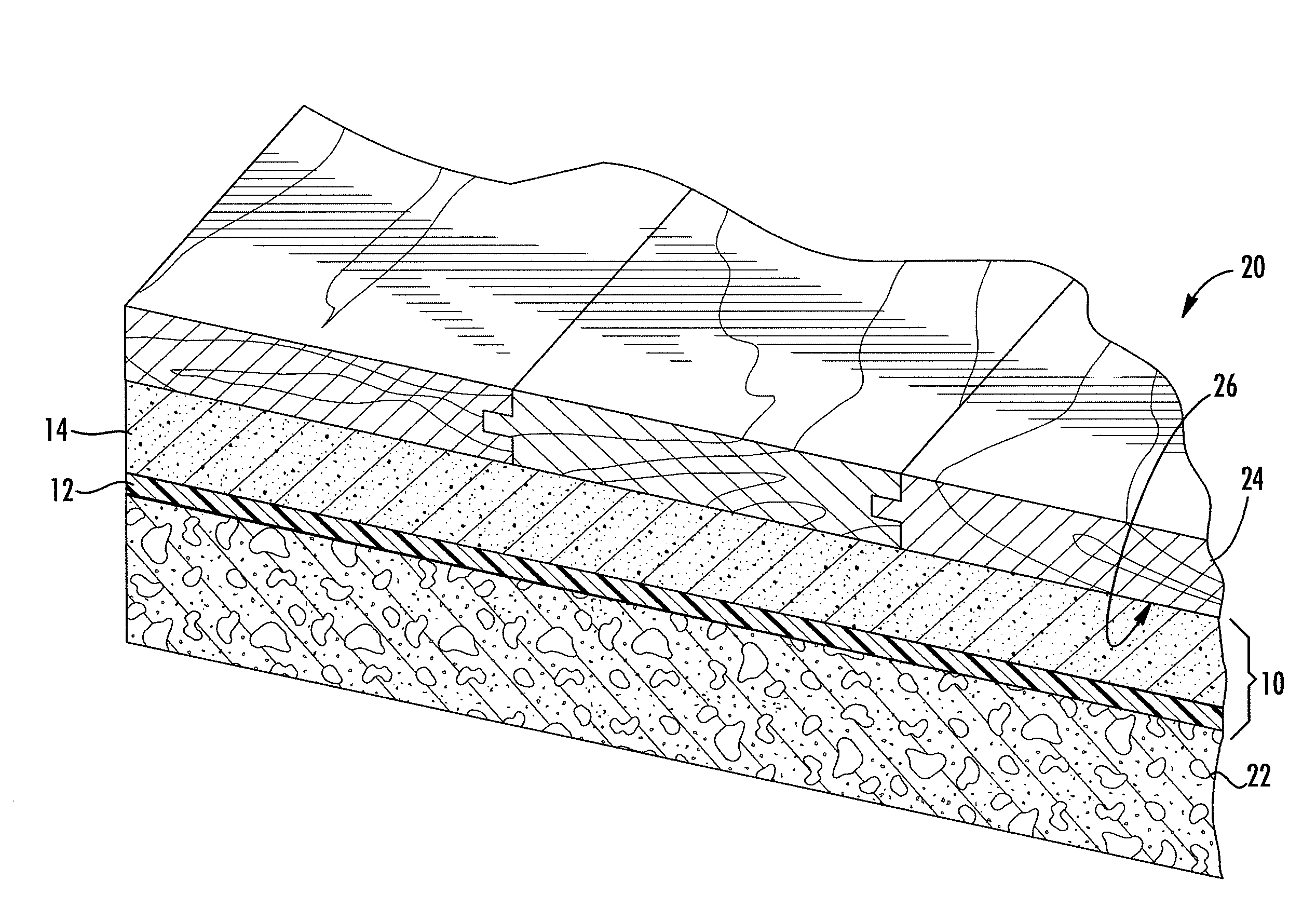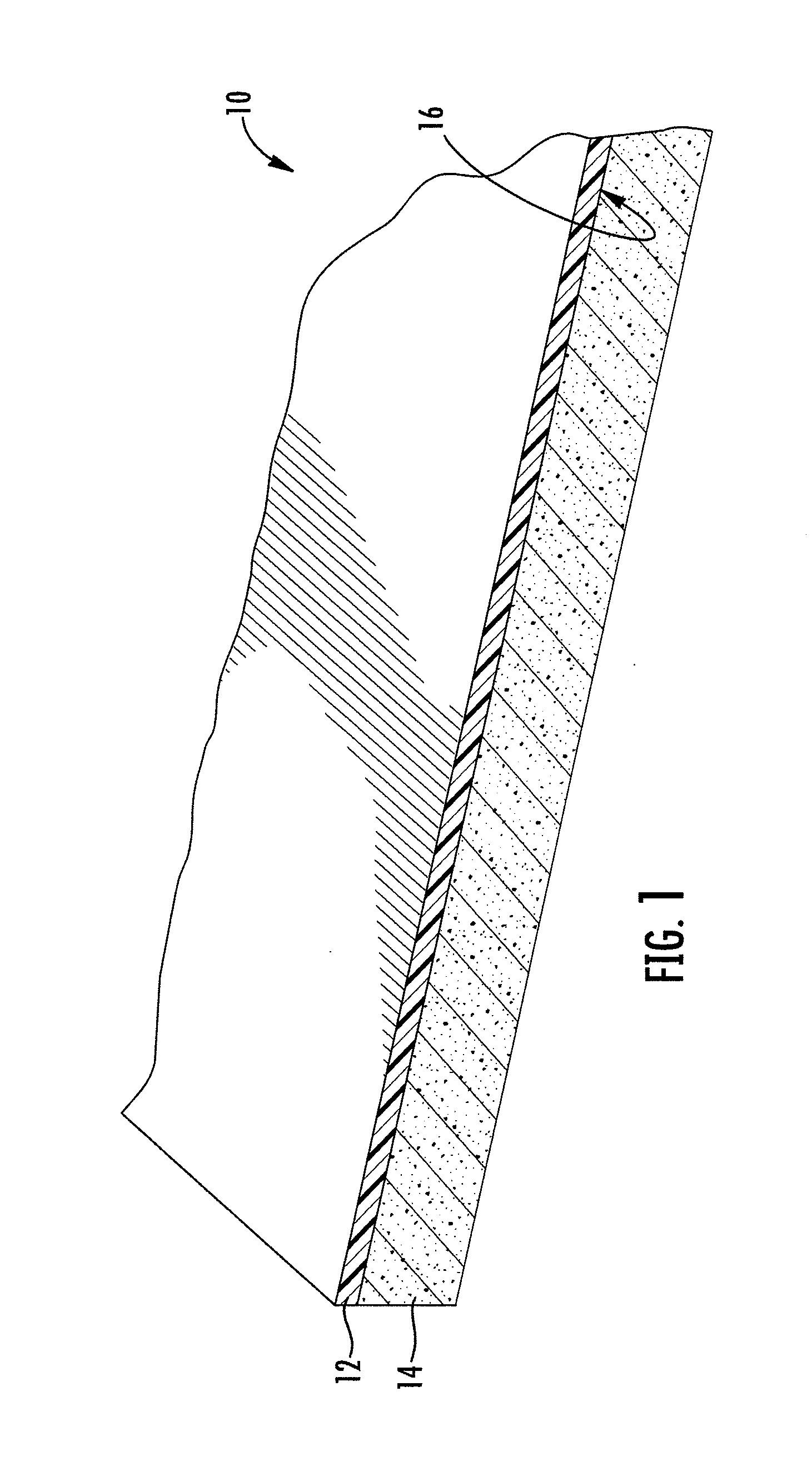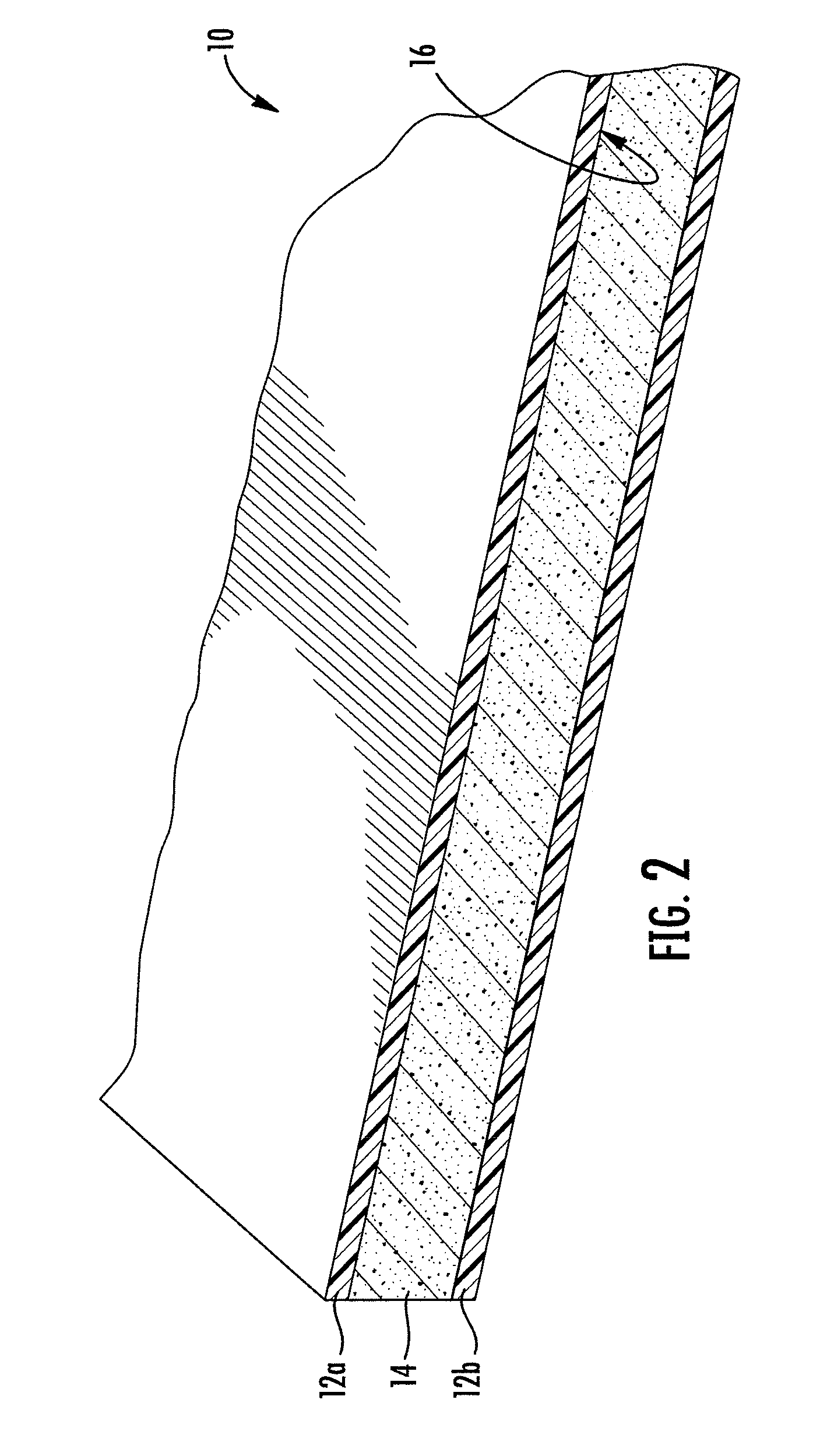Alkaline and heat resistant foam composite and floor underlayment
a foam composite and heat-resistant technology, applied in the field of foam laminates, can solve the problems of increasing the number of free radicals, increasing the number of carbon bonds, and increasing the number of cracks between wood pieces, so as to prevent the degradation of foam composite materials and prolong the durability and useful life of composite foam materials
- Summary
- Abstract
- Description
- Claims
- Application Information
AI Technical Summary
Benefits of technology
Problems solved by technology
Method used
Image
Examples
examples
[0055]In the following example, the alkaline and heat resistance of composite foam materials were investigated by SP Technical Research Institute of Sweden using SP standards SP-Method 116 and SP-Method 0414. Table 1 describes summarizes the four samples that were investigated.
[0056]
TABLE 1Compositions of SAMPLES 1-4CarbonFoam layerDensity (lbs. / ft3) / Film layer 1Film layer 2scavengerSample No.CompositionThickness (in.)CompositionComposition(wt. %)Sample 1Polyethylene2.0 lbs. ft3 / 0.125———(non-crosslinked)in.Sample 2Polyethylene2.0 lbs. ft3 / 0.125——0.1(non-crosslinked)in.Sample 3Polyethylene2.0 lbs. ft3 / 0.125polyethylenepolyethylene0.1 / layer(non-crosslinked)in.Sample 4Polypropylene3.0 lbs. ft3 / 0.085———(crosslinked)in.
[0057]Sample 1 comprised a non-crosslinked low density polyethylene foam. No carbon radical scavenger was added to Sample 1.
[0058]Sample 2 comprised a non-crosslinked low density polyethylene foam. The foam layer included 0.1 wt. % of poly[(6-[1,1,3,3-tetramethylbutyl)amin...
PUM
| Property | Measurement | Unit |
|---|---|---|
| temperature | aaaaa | aaaaa |
| thickness | aaaaa | aaaaa |
| thickness | aaaaa | aaaaa |
Abstract
Description
Claims
Application Information
 Login to View More
Login to View More - R&D
- Intellectual Property
- Life Sciences
- Materials
- Tech Scout
- Unparalleled Data Quality
- Higher Quality Content
- 60% Fewer Hallucinations
Browse by: Latest US Patents, China's latest patents, Technical Efficacy Thesaurus, Application Domain, Technology Topic, Popular Technical Reports.
© 2025 PatSnap. All rights reserved.Legal|Privacy policy|Modern Slavery Act Transparency Statement|Sitemap|About US| Contact US: help@patsnap.com



